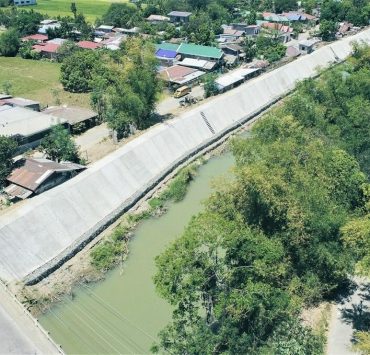Rizal’s blood, Rizal’s brain

Saturnina Rizal de Hidalgo was the National Hero’s eldest sister. She was always “[Se]ñora Neneng” to Jose Rizal, addressed in the third person with a deference second only to his mother. I had always known that handwritten letters of Rizal preserved in the Ateneo de Manila University archives were donated long ago by the heirs of Saturnina, what I did not know was that the donation came with some pieces of jewelry (she sold jewelry and native textiles). There was also a small crystal bottle that allegedly contained fragments of Rizal’s brain.
Last year, in Dapitan for Rizal’s birthday, I spoke with Britz Hamoy who asked me to confirm whether Rizal’s brain fragments were authentic. As I had never heard of this, Hamoy showed me a Facebook post by University Archives Director Dr. Francis Navarro that showed what seemed like a silver reliquary and a handwritten caption stating these were parts of Rizal’s brain. When I visited the archives and asked to see it, Dr. Navarro brought out the crystal bottle with a silver cap containing what looked more like bone than brain fragments. I presumed that the bottle used to have alcohol to preserve its contents but that had since dried up. I took some pictures and left.
What did it feel like to hold these? Of course, I was curious, but with a healthy skepticism that forms part of a historian’s personality. I reined in my excitement. We do know that almost all of Rizal’s remains lie under the monument in Luneta, with the exception of a part of his backbone that is displayed in the Rizal Shrine in Fort Santiago. The bone is chipped on the side where, according to Rizal family lore, the bullet hit him on Dec. 30, 1896. Now we have a small bottle that contains more human remains.
The significance of holding this relic in the palm of my hand is that, with proper DNA analysis, we will know physical aspects of Rizal that we didn’t know before. I have been studying him for close to four decades now and am surprised that new things can still be learned from something that is considered old hat.
According to family lore, one of Rizal’s sisters—he had nine—went to Luneta after her brother was executed on Dec. 30, 1896, with a batch of handkerchiefs. She then went to the spot where her brother fell and dipped each of these hankies in his blood. I was told that each member of the family was given one of these blood-stained hankies as a souvenir. Three decades ago, a branch of the family informed me that they had a stained hanky in their memorabilia that matched the description in the story I was told. When I asked to see it, a maid brought it out proudly saying she had washed and bleached it. “Ang tindi po ng mantsa n’yan kaya kinuskos kong mabuti, at kinula ko pa.” If Rizal’s blood had indeed gone down the drain, I console myself with the knowledge that there must be more of these lying around somewhere but have not come to light.
If you think Rizal’s brain fragments are a gruesome relic, there are archival photos of Rizal’s mother holding her son’s skull. She would display the skull to visitors in her Binondo home before her death in 1911. The late Alejandro Roces once told me that my finding these Rizaliana relics were not serendipitous but was fated to be. I’m not one to be superstitious but when I recovered the Spanish drafts of Rizal’s third novel “Makamisa” in the 1980s, it was fate. Rizal began the work in Tagalog, and continued in Spanish, but nobody connected the two manuscripts. “Makamisa” is the title of a chapter in an untitled, unfinished novel. When the 245-page Spanish manuscript was bound before the war, a librarian mislabeled it as “Borrador del Noli me tangere” (Drafts of the “Noli me Tangere”). This simple error led to it lying in plain sight. Everyone who saw the manuscript thought it was not important. They judged it by its cover.
In 1987, I wanted to do a study of the novel from the drafts to the final published version and when I read through this manuscript I asked, how come there are no “Noli” characters or scenes in it? Then I realized what was in my hand was something else. It was the draft of the third novel after “Noli me Tangere” and “El Filibusterismo.”
Discovery continues. During the pandemic, I came across a small note in one of Rizal’s diaries indicating his height. A trivial matter really, but it settled the debate about how tall Rizal really was. Who can be more definitive on his height than Rizal himself?
When I started researching Rizal four decades ago, another historian sneered at me saying “gasgas na ’yan!” He tried to persuade me to research something else. Today, I am only sure about my doubts, and the knowledge that I do not know all that there is to know about Rizal makes all these little finds relevant, as they illustrate how much more research needs to be done on Rizal and Philippine history. I hope to find something more substantial than traces of Rizal one day.
Ambeth is a Public Historian whose research covers 19th century Philippines: its art, culture, and the people who figure in the birth of the nation. Professor and former Chair, Department of History, Ateneo de Manila University, he writes a widely-read editorial page column for the Philippine Daily Inquirer, and has published over 30 books—the most recent being: Martial Law: Looking Back 15 (Anvil, 2021) and Yaman: History and Heritage in Philippine Money (Bangko Sentral ng Pilipinas, 2021).


















